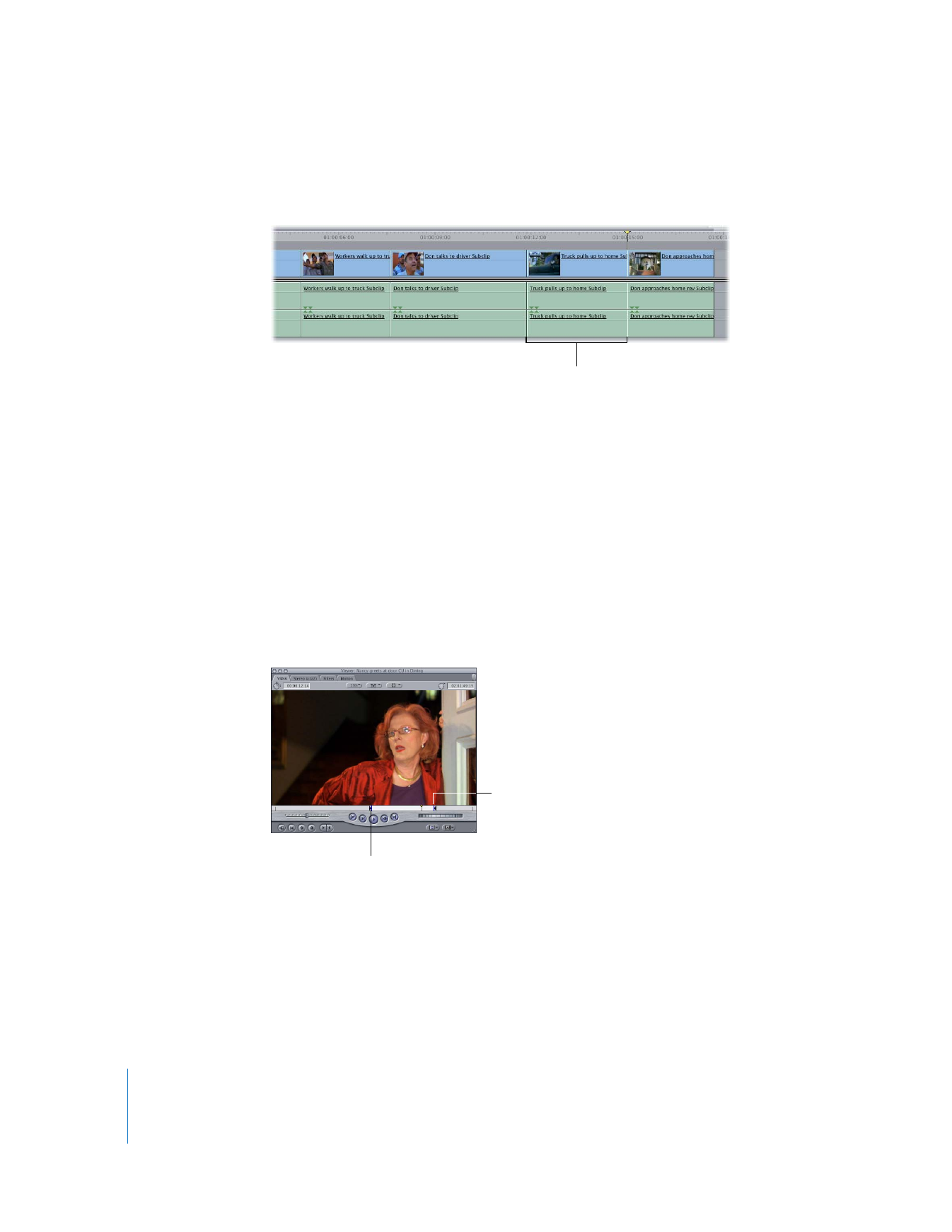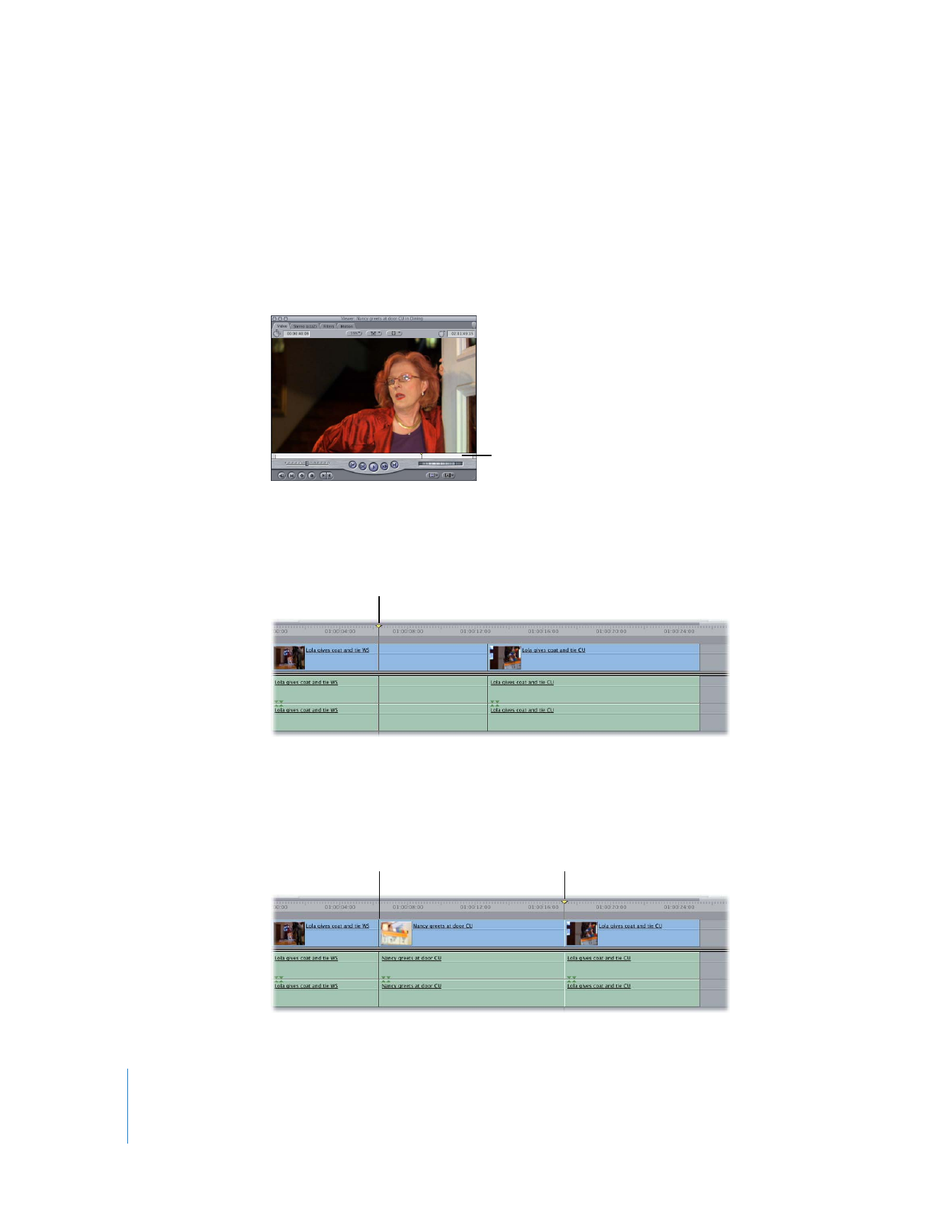
Example: Backtiming a Clip into Your Sequence
Instead of editing a clip into your sequence using clip In and Out points in the Viewer
and a sequence In point in the Canvas or Timeline, you can edit clips using only an Out
point in the Canvas or Timeline. This is called backtiming a clip. You can use this method
when you want to make sure a particular frame of a clip ends at a specific point in a
sequence. In the resulting edit, your source clip’s Out point is placed at the Out point
you set in your sequence, and the rest of the clip appears in your sequence before this
point, to the left:
1
Double-click a clip to open it in the Viewer. (This is your source clip.)
2
Specify In and Out points for the source clip in the Viewer.
The new clip fills
the gap.
In point
Out point

Chapter 10
Three-Point Editing
169
II
3
In the Timeline, move the playhead to the point in your edited sequence where you
want your clip to end, and set an Out point.
4
If you do an overwrite edit, you’ll see that your clip has been edited into the sequence
so that the Out point of your clip lines up with the Out point you specified in the
Timeline. The rest of your clip has overwritten any material to the left of the Out point
for the duration defined by the In and Out points set in the Viewer.
Set an edit point at the
location where you want
the clip to end.
The new clip lines up
with the Out point you
specified in the Timeline.

170
Part II
Rough Editing